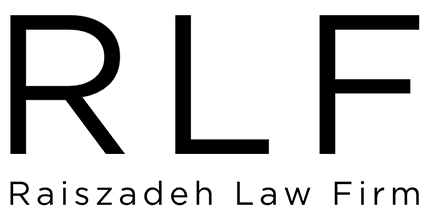Consumers can be exposed to a magnitude of harms and dangers when dealing with a product, some of which can result in bodily harm or even death. The jurisdiction in which the product liability case is filed will determine the liability of those involved in the chain of commerce as the defective product passes from the manufacturer to the consumer. A person or company can be held liable for a number of products ranging from faulty medical devices to cosmetics that have not been advertised correctly.
Liability can arise in two ways: by a defect in an individual product or via faulty design of the product overall. A defect in an individual product occurs when a single or small percentage of products have a defect at the time they are manufactured. A design defect refers to an inherent harm being present in every one of certain products, due to a flaw in its original plans.
Our expert team of lawyers at The Raiszadeh Law Firm are here to assist you if you have been injured as a result of a faulty design or defect in a product. Our decades of experience afford us the knowledge and expertise to help navigate the path to recovery and get you the compensation for your injuries that you deserve.
What to Expect
Depending on the specifics of the case, an injured consumer can seek compensation from one or more liable parties, including manufacturers, wholesalers, and/or retail outlets. Determining the defendant in a product liability case is not a matter of choosing one liable party over another; any party involved in a defective product’s chain of distribution may be held accountable through a product liability lawsuit. When beginning to put together a claim for a defective product, it is important to include any party involved in the chain of distribution.
Manufacturer: This can include a large multinational company, an individual working out of his or her garage, or any parties involved in the design or marketing of the product. Depending on the size of the product, claimants can include the manufacturer of the defective part, as well as the manufacturer of the entire product.
Retailer: When a retailer advertises an item for sale, it is impliedly ensuring the product is safe and suitable for use. If a consumer purchases a defective product, the seller of that item, even though they were not involved in its manufacture, can be held liable for damages.
Wholesaler: The wholesaler is considered the “middleman” between the manufacturer and the retailer.
Any or all of the above parties could be held liable for damages resulting from an injury caused by a defective product.
Time is of the essence after being injured in a products liability case when it comes to getting you the compensation you deserve and preserving key pieces of evidence that are vital to your claim. Please do not hesitate to call us at 844-RLF-WINS. Allow one of our expert lawyers to evaluate your case. We do not take a penny for our services unless your case settles.
TESTIMONIALS

Abi A.
Unfortunately, I have had the experience to speak about this topic with confidence, having dealt with a few accident attorneys in the past, Ramin Raiszadeh is simply a BEAST of an attorney. After retaining his firm, Ramin continued to call to check on me during my hospital stay to see if I needed anything and to let me know how my case was progressing. Ramin and his assistant made it a point to take care of all the headaches of speaking with the other parties representatives. I only spoke to them once in regards to the loss of my vehicle. Ramin contacted me during holidays to wish me the best and to see how my business was doing seeing as how I was not there to run it, Ramin always told me he would do everything in his power to see to it that I would be compensated for the loss of business. After my healthcare provider did what they could, Ramin helped me find a doctor to help continue with my physical therapy where they found some things my healthcare provider did not bother to look for or had missed. After all of this, Ramin worked tirelessly to negotiate a settlement from the opposing insurance company’s defense attorney, where he got exactly what we asked for. Ramin is simply the best and a man of his word.

Angela B.
Ramin was referred to me after a rear-end accident I was involved in last summer. He was very insightful, kind and assured me he could help. It could not have been an easier process, his doctors were very helpful and experienced! I would recommend him to anyone involved in a motor accident. He helped me make the most out of a very stressful situation. Thank you for everything!

Karl G.
God forbid I’m ever in a situation again where I need any legal representation: but if I do, I won’t hesitate a single moment to give them a call. All-in-all the people I worked with all seemed to be genuinely kind, and to care for my well-being, AND they were able to get me a settlement that (while still fair) was 10X what I would have expected otherwise. If I ever see them again under different circumstances I will definitely be very enthusiastic.

John S.
It was a pleasure working with Ramin. He was always there for us and did a great job taking care of the issue at hand. He always answered his phone and made sure we were updated on any new info with our case. I highly Recommend Ramin if you are looking for a Lawyer that has your best interest in mind. Thank you Ramin for everything you have done for us.. It will never be forgotten.

Bobby V.
I had a very good experience with Ramin Raiszadeh’s legal team . I got into a motorcycle accident and spent about a year trying to get everything handled on my own and it was an absolute nightmare. Lots of restless nights and days spent worrying about my health and whether or not I’d actually be compensated. After I had finally become fed-up trying to do everything on my own I came to the conclusion I would never see a fair settlement without a Law Firm’s assistance. Thankfully I kept good records and pictures of the damages. I finally gave Ramin a call and left a voicemail. Within an hour I was talking to him on the phone explaining my situation- he quickly had his team send me the necessary paperwork. I was able to read everything and get it signed online at my own pace and without feeling pressured. Before the day was over I had legal representation.


